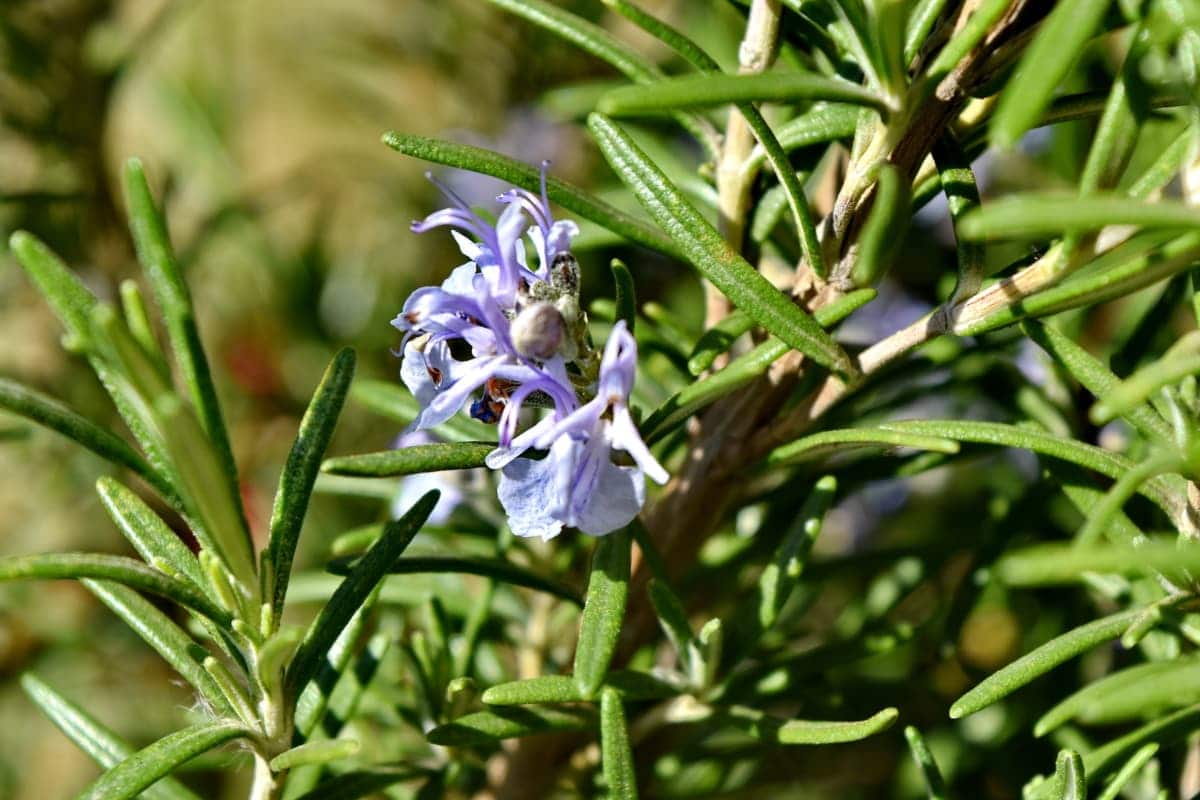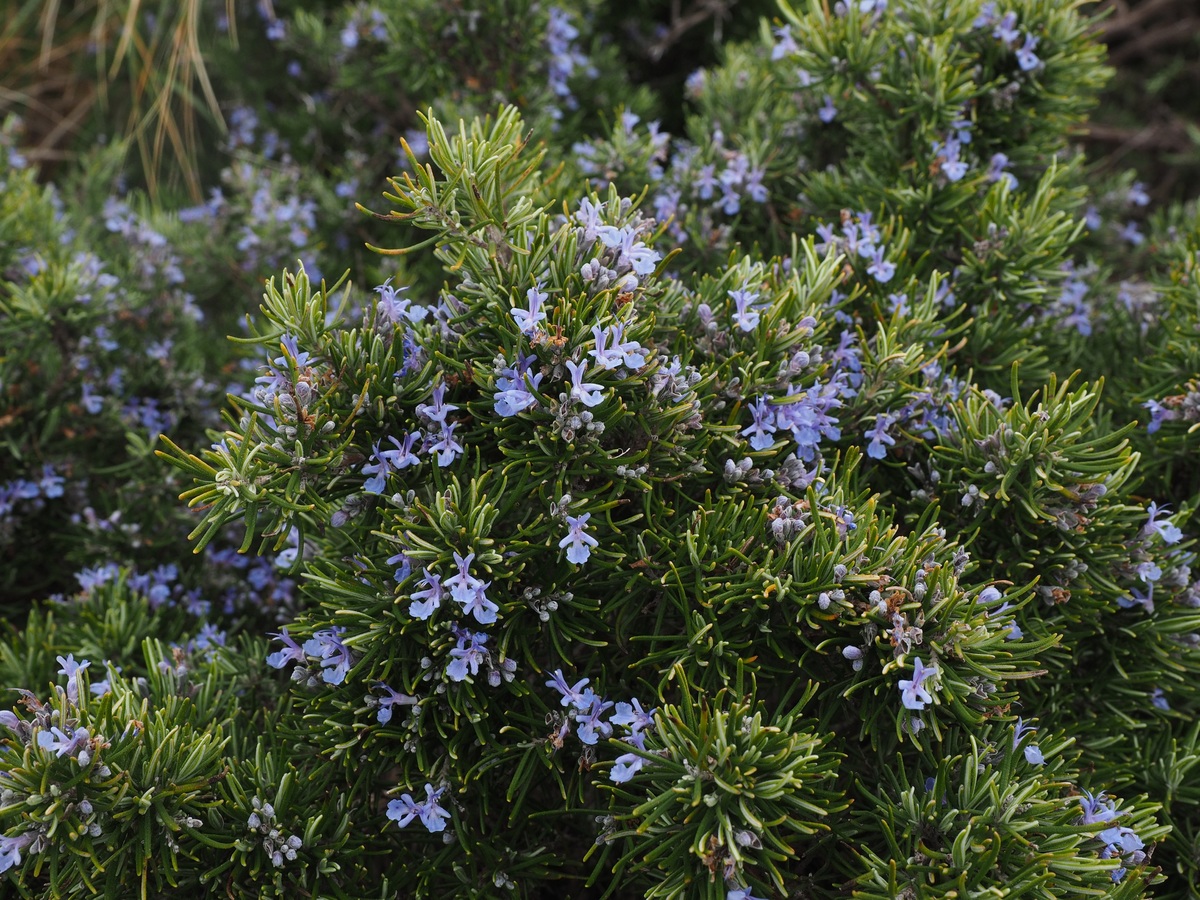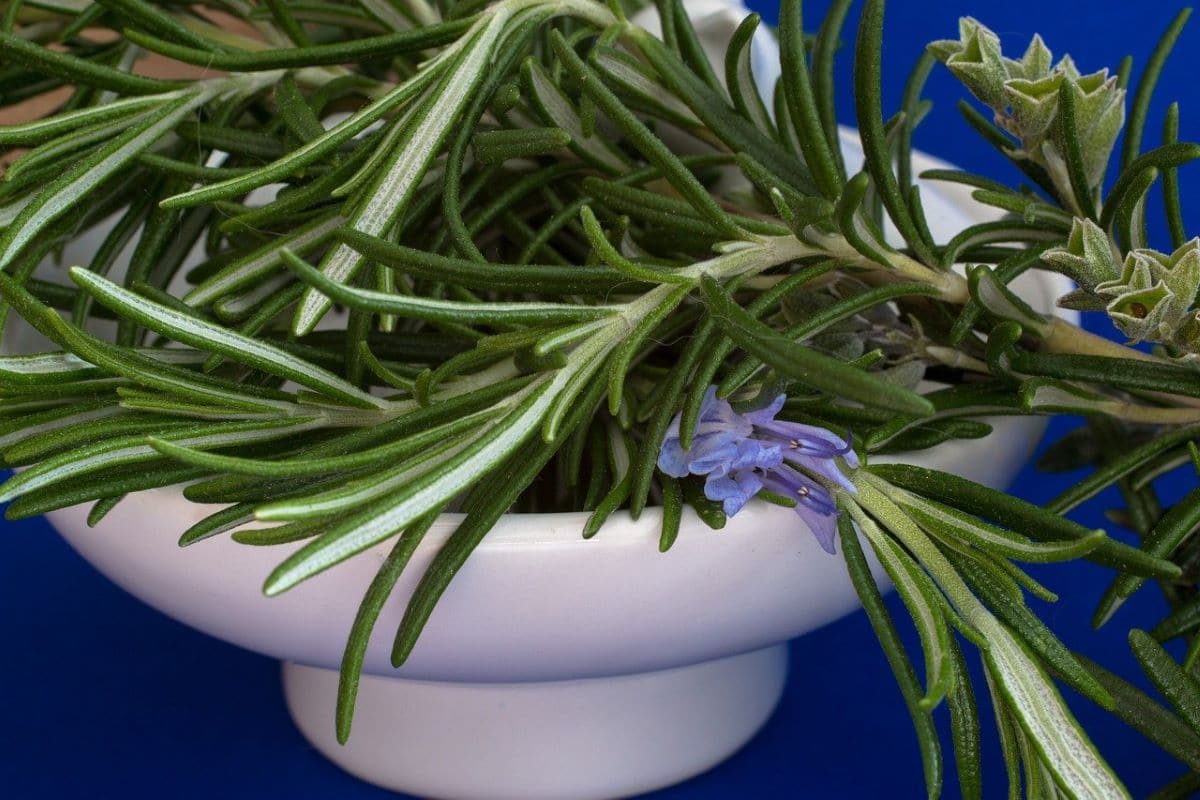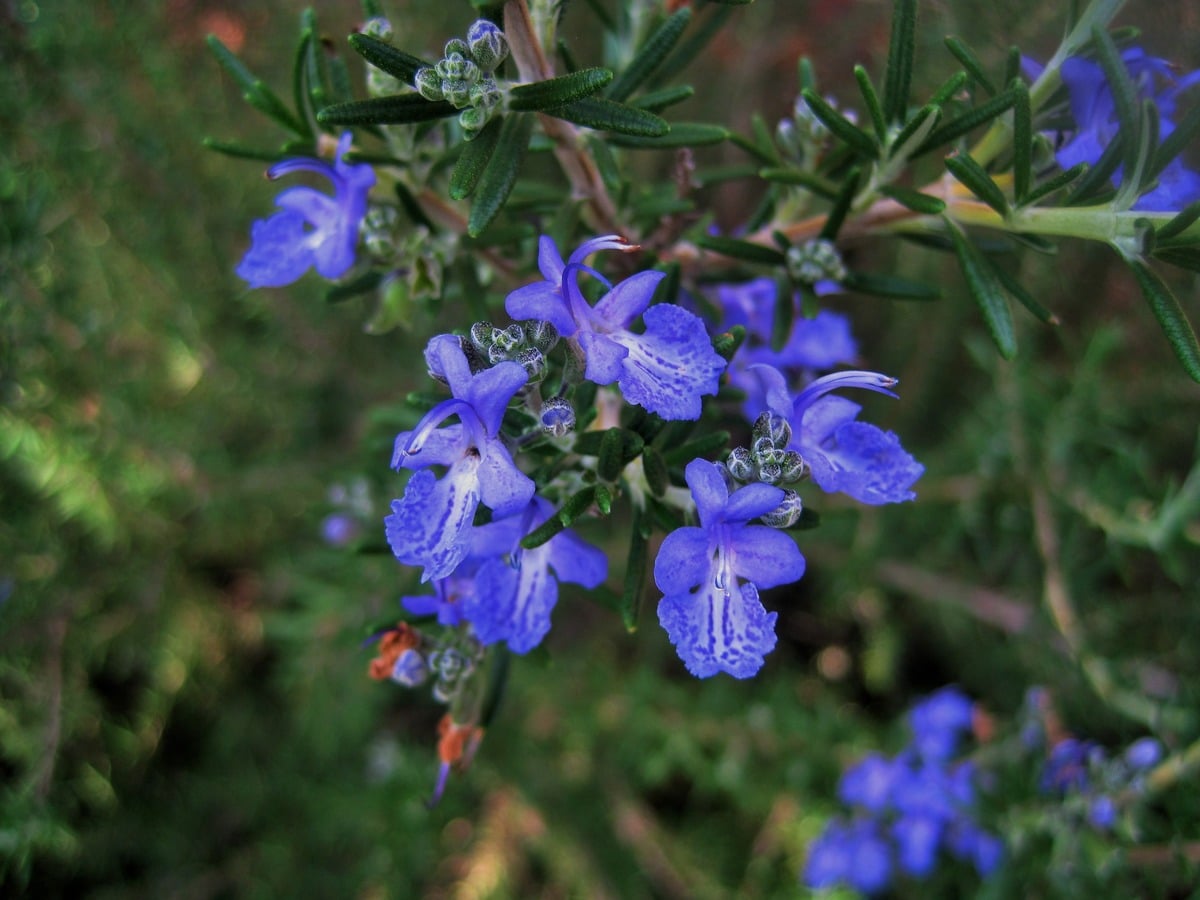
Rosemary is a plant that is grown in sunny gardens and patios. You do not need to be very aware of it since it can live with little water and, in addition, it does not usually have pests or diseases that endanger its life. To all this we must add its characteristic aroma, which is why it is widely used in the kitchen to season different dishes.
Its growth rate is slow and therefore the sale price is also higher than we could imagine. For this reason, it is very interesting to multiply it by seeds, since although this will take longer to enjoy its flowers, we will also be able to have several specimens at a really low cost.
What is rosemary?

Rosemary is an evergreen shrubby plant whose scientific name is sage rosmarinus. Before was Rosmarinus officinalis, a name that is now considered a synonym of the current one. It is slow growing, and can be up to 2 meters tall. The leaves are thin, dark green on the upper side and whitish on the underside due to the fact that they are covered with very short hairs.
Its flowers are bluish-violetThey are about 2 centimeters long and appear along the stems, at the ends, and under some leaves throughout the spring and again in the fall. These are melliferous, as well as aromatic, so they are very attractive to pollinating insects. The fruit is a nocula of about 3 millimeters with an ovoid shape and brown in color.
As for its origin, it is a native of the Mediterranean region, living from 0 to 1500 meters above sea level.
What is?
Rosemary has several uses today, which are:
- Culinary: is undoubtedly the most popular. The stems with leaves are cut and used as a condiment, either in stews or paellas for example. It is also used to cover, for example, Manchego cheese.
- Medicinal: it is a plant that has antiseptic and emmenagogue properties, and can also help relieve pain caused by arthritis or osteoarthritis. It is also good against coughs, and to improve blood circulation. However, it should not be consumed frequently, as it contains carnosic acid, which can cause liver problems.
- Other uses: In Spain, especially on All Saints' Day and on Christmas Eve, stems of rosemary are sometimes hung on doors or placed on the grave of loved ones, as rosemary is believed to attract good luck.
What are the benefits of rosemary?

As long as it is taken only once in a while, rosemary can help us enjoy better health. For this, infusions are made in order to have rosemary tea. This has multiple benefits, such as these:
- Helps heal inflammation
- It can make us feel more rested
- Improves blood circulation
- It serves to have a better digestion
- It is a good diuretic
How to care for rosemary?
It is a very easy to care plant that does not need special care. In any case, it never hurts to know how to take care of rosemary, since this way we can take the appropriate measures in order to make sure that it grows well and that it is in good health.
Location
It must be placed outside. It is important that you get the sun directly, so that all its parts can absorb it and make the most of it to carry out photosynthesis and grow normally. For this reason, it is not a good idea to keep it indoors, since there it would lack light and it would not take long to bend towards a powerful light source.
Earth
Rosemary is sensitive to excess water. It grows in light, well-drained soils with organic matter. Therefore, if the garden soil becomes flooded and / or takes hours to absorb the water, it is necessary to make a hole of about 50 x 50cm, put a layer of about 10 centimeters of gravel, clay (on sale here) or volcanic clay, and then finish filling it with universal substrate (for sale here).
On the other hand, if it is going to be grown in a pot, the first thing to do is check if it has holes in its base. Ideally, you should have several small ones and not a large one in the center so that the water takes less time to come out through them. Once this is done, we will proceed to plant using universal substrate mixed with 40 or 50% perlite or similar substrates.
Irrigation and fertilizer

Watering the rosemary should be moderate. You have to water it about twice a week, until all the soil or substrate is well wetted. It should not be watered from above, that is, the plant should not be wet since otherwise it could burn when the sun hits it and dry out. Likewise, if it is in a pot it is not advisable to put a plate under it, although this could be done if you later remember to remove the water that has been left over after watering.
On the other hand, if we talk about the subscriber, as it is a plant with multiple uses, it is advisable to use ecological fertilizers to fertilize it, such as worm castings, cow dung, compost, in spring and summer. You could also add the chopped eggshells, or even if it is on the ground the banana ones, or the tea bags.
Transplant
The transplant will be done when the rosemary roots come out through the drainage holes of the pot, and only it has to be done in spring. If you want to plant in a larger container, it will be done approximately every 3 years.
Plagues and diseases
In general it is very resistant. But it can be attacked by red spider and mealybugs. Both pests are easily removed with diatomaceous earth (for sale No products found.), a fast-acting ecological insecticide.
Diseases almost always arise from excess water, and are the alternariasis that causes black spots on the leaves, and the rhizoctonia that rots the roots. In these cases, you must treat with a fungicide that contains copper (for sale here), as well as space the risks.
Multiplication
It multiplies by seeds and cuttings in spring. The former are sown in pots with substrate for seedlings (for sale here), placed in a sunny location. Keeping the soil always moist they will germinate in the course of two or three weeks.
If you want to multiply it by cuttings, you have to cut a stem and impregnate the base with homemade rooting agents. Then you have to plant it (not nail it) in a pot with coconut fiber (for sale here) for example, or universal substrate. You have to water several times a week so that it does not dehydrate. If all goes well, it will start producing roots in about 15 days.
Rusticity
The formerly known as Rosmarinus officinalis, it is a shrub that resists frosts of up to -12 ° C.
Where to buy rosemary?
Would you like to have your own plant? Click here below:
If you prefer seeds, you have them at just one click.
